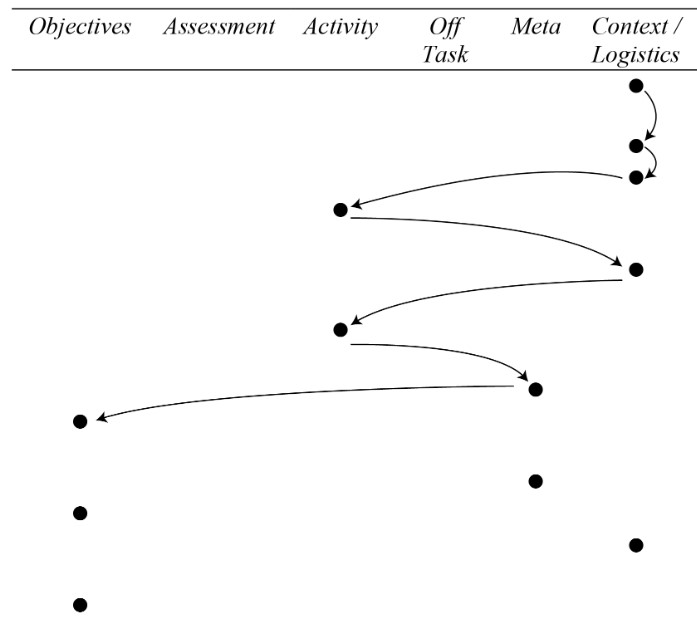The role of learning designer is poorly understood. In practice, learning designers within universities are often given jobs associated with learning technology (“can you please just put this up on the learning management system for me?”, etc.) In theory, though, learning designers are supposed to be concerned with the practice of designing for learning.
As Steven Kickbusch (2022) describes in his thesis on the topic of How learning designers work with teachers, learning designers need to be good at designing for learning (what activities need to be designed to make desired learning happen?), facilitating a co-design process (how can I work with a subject matter expert to ensure a good outcome from our design work together?), and also mentoring/coaching teachers (how can I ensure that the capabilities of my organisation to design for learning improve over time through my doing my job?).
I had the good fortune to work with Steven in developing a paper about ways to represent the process of designing for learning (Kickbusch & Kelly, 2021). Steven came up with the notion of Learning design process flow maps (LDPFMs) that capture the progression-over-time of the design for learning process.
The figure below (following Kickbusch & Kelly, 2021) shows an example of a LDPFM. I really like these figures as they show how a learning designer, teacher, or anyone else engaged in design for learning is proceeding with their process. The headings represent important aspects of a design for learning. LDPFMs are simple to create and obvious once you see one which is a good sign that they are helpful. They are very useful for understanding what’s going on in the design process when designing for learning.
Are the designers considering objectives before jumping into activities? The order in which things happen really matter and become visible through these figures.
I feel like there are many uses for these types of figures and I do hope that further research is conducted by Kickbusch and others to better understand the practice of learning design and the nature of expertise in design for learning.

References
Goodyear, P. (2023). An education in educational technology. Australasian Journal of Educational Technology, 39(3), 1-14. https://doi.org/10.14742/ajet.9082
Kickbusch, S. (2022). How Learning Designers Work with Teachers, PhD Thesis, QUT. https://eprints.qut.edu.au/235922/1/Steven%2BKickbusch_PhD_Thesis_2022%282%29.pdf
Kickbusch, S. and Kelly, N. (2021). Representing teacher coaching sessions: understanding coaching that develops teachers’ capability to design for learning, International Journal of Mentoring and Coaching in Education, Vol. 10 No. 4, pp. 418-434. https://doi.org/10.1108/IJMCE-01-2021-0011
